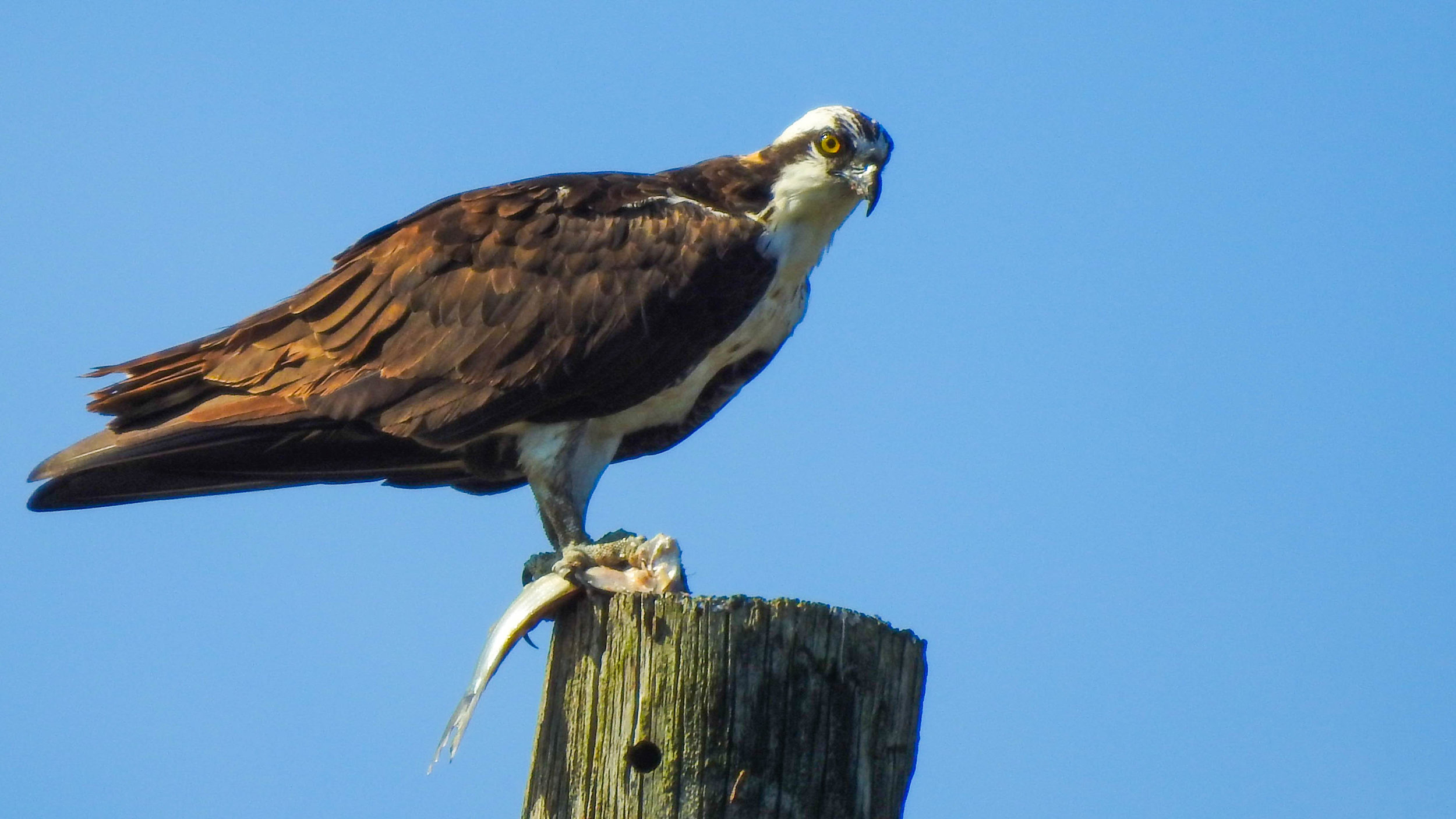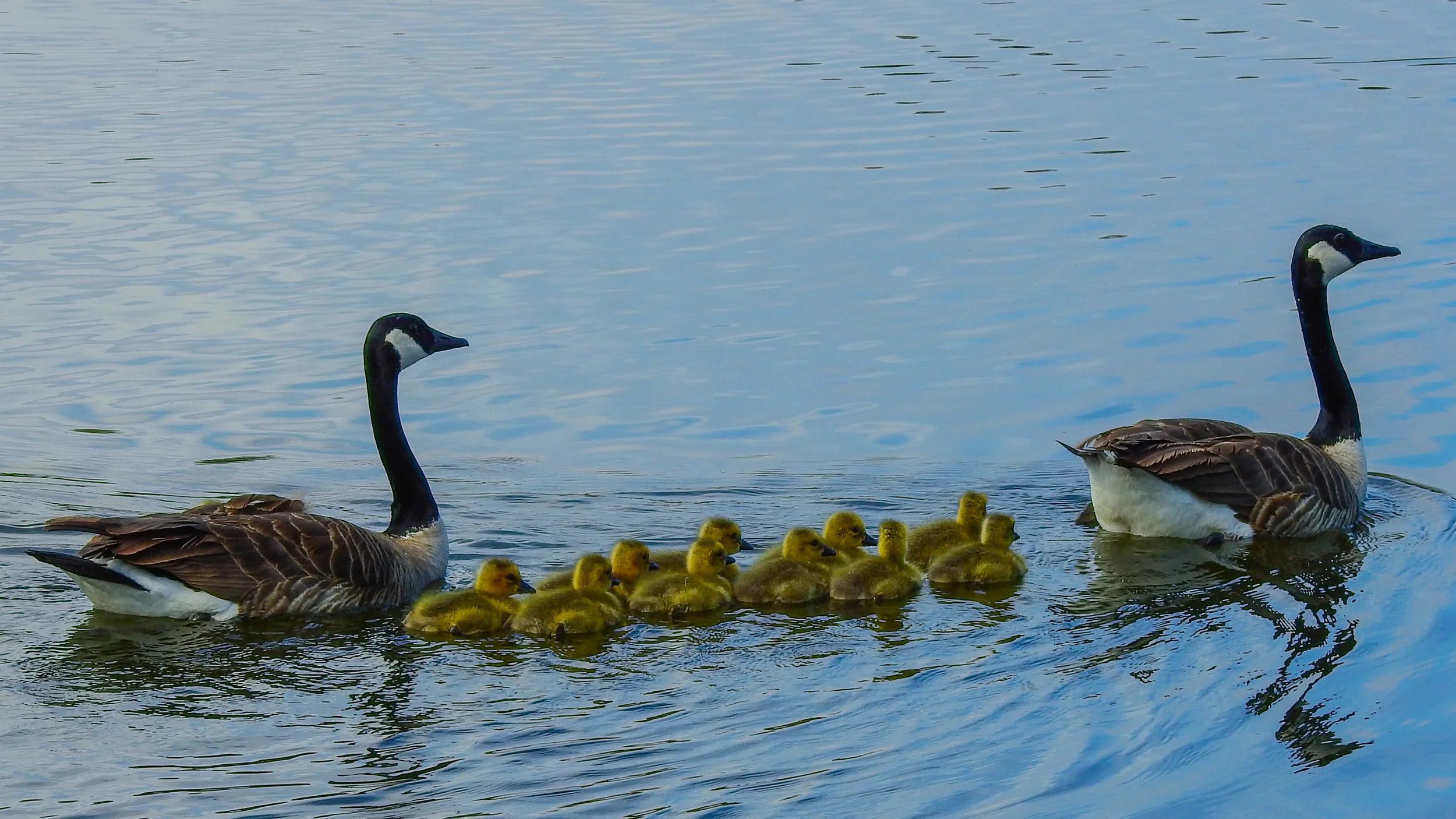More than 325 bird species make the round-trip each year along the Mississippi Flyway, from their breeding grounds in Canada and the northern United States to their wintering grounds along the Gulf of Mexico and in Central and South America. Add the regions area birds and state parks and natural areas and birders have an abundance of birds to look for and places to look for them. Bald Eagles are the main stars in the region beginning in late September and ending in early March.
PAGE 3 OF 3
SOUTH OF THE CONFLUENCE OF THE MISSISSIPPI & OHIO RIVERS
Columbus-Belmont State Park
Columbus, Kentucky
A multitude of migratory songbirds pass through the park during spring and fall, most from mid-April to mid-May and again from early September to mid-October. At least two-dozen species of warblers, plus the flycatchers, vireos, thrushes, tanagers, and orioles. One of the highlight species at Columbus-Belmont State Park is the Mississippi Kite, present from early May to late August. The best areas for viewing are the woodland edges and overlooks along the top of the bluff overlooking the Mississippi River.
Ballard Wildlife Management Area
Ballard County, Kenrucky
Ballard Wildlife Management Area offers excellent year-round birding. The majority of the Ballard Wildlife Management Area is closed from mid-October to mid-March, but a public viewing loop is accessible 365 days a year unless it’s flooded. Waterfowl, especially Canadian Geese, and Bald Eagles can be observed from along the public loop throughout the winter. The extensive tracts of bottomland hardwood forest harbor a great diversity of forest birds including Acadian Flycatchers and Great Crested Flycatchers, Northern Parula, and American Redstarts. Spring and fall migration can be excellent for warblers and other songbirds. During the summer and fall, the impoundments at Ballard WMA often begin to lower because of reduced rainfall, and herons, egrets, and shorebirds are sometimes abundant.
Little River Conservation Area
Kennett, Missouri
For birders the most common birds that can be expected to be seen at Little River Conservation Area are spring and fall shorebirds, wading birds, waterfowl and raptor migrations. Other bird species that can be found are dickcissel, bobolink, and other grassland bird species. Before they became extinct, millions of passenger pigeons passed through this area as they migrated north and south. Least terns and black terns can be seen every year feeding at Jerry P. Combs Lake.
Donaldson Point Conservation Area
New Madrid, Missouri
Donaldson Point Conservation Area is home to several species not usually seen in the Mississippi lowlands. These include the endangered Swainson's Warbler that nests in the patches of giant cane, Mississippi kites, Bald Eagles, and Least Terns as well as other shorebirds. The area is good for birding and there is a good variety of species present throughout Donaldson Point Conservation Area.
Crowley's Ridge State Park
Paragould, Arkansas
Crowley's Ridge State Park is a great place for birders. Water birds such as the Great Blue Heron, Belted Kingfisher, and various species of waterfowl can be seen from the Walcott Lake Trail atop the sprawling fishing lake levee. Wild turkey are often spotted, as well as a variety of woodpeckers and Carolina Chickadees along the Spider Creek Trail.
St. Francis Sunken Lands WMA
Craighead, Greene, Poinsett, & Clay Counties, Arkansas
Some isolated stands of old growth bald cypress still exist in St. Francis Sunken Lands WMA, and there are excellent opportunities for bird watching and wildlife viewing. The Payneway Moist Soil Unit located on the west side of the river, just north of the St. Francis Lake control Structure hosts a variety of shorebirds, eagles and several duck species. The area is flooded in October through February annually to provide wintering habitat for migrant birds and ducks. As many as 50,000 ducks are commonly seen on the area which is protected from hunting as a waterfowl rest area.
Lake Frierson State Park
Jonesboro, Arkansas
On the lake and along the shoreline at Lake Frierson State Park, Osprey, woodpeckers, herons and kingfishers are seen year round. Lake Frierson State Park is also a good viewing area for migratory waterfowl in the winter.
Big Lake NWR
Manila, Arkansas
Big Lake NWR was important in the recovery of the bald eagle from its endangered status. Eagles came back to nest on the refuge in 1989 and have annually raised young since 1993. The refuge annually winters many species of waterfowl. Peak numbers in January and February can exceed 200,000. Wood ducks are year-round residents and annually raise approximately 2,500 young in natural cavities and nest boxes. Over 225 bird species have been observed on the refuge and recorded by visiting ornithologists.
Wapanocca National Wildlife Refuge
Turrell, Arkansas
Because of its strategic location in the heart of the Mississippi Flyway and the diverse habitat, the refuge is a major stopover for warblers and other neo-tropical birds. The refuge is also a prime wintering area for migratory waterfowl. Bald eagles, Great Blue Herons, Great Egrets and Anhingas nest on the refuge.
Reelfoot Lake State Park
Tiptonville, Tennessee
Reelfoot Lake State Park’s location along Mississippi Flyway, which nearly half of North America's bird species and about 40 percent of its waterfowl use, creates opportunities to view a variety of waterfowl, shorebirds, herons, and songbirds. The lake is known as a great place to view Bald Eagles, Golden Eagles, Ospreys, and other birds of prey. The Park is the site of a Pelican Festival in the fall.
Reelfoot National Wildlife Refuge
Lake County, Tennessee
Reelfoot National Wildlife Refuge is one of the major wintering, migrating and production areas for waterfowl in the southeast. Beginning in October bald eagles begin to arrive and are plentiful by Thanksgiving. The Grassy Island walking trail offers excellent viewing of waterfowl, and songbirds. October also is the month that ducks, primarily Mallards, Gadwall, American Widgeon and Ringneck ducks, begin arriving. By January waterfowl concentrations reach their peak with up to 400,000 ducks and 150,000 geese making Reelfoot Lake their temporary home. By February the Bald Eagle population reaches its peak. Reelfoot Lake NWR gives free guided eagle and wildlife tours from December through February. In March the bald eagles begin their northward migration and are replaced by Ospreys who are returning from South America and by large numbers of Northern Shovelers and Blue-winged Teal arriving on their northward migration. The lakes resident Wood Ducks return and begin their nesting activity. In April shorebirds and ducks are abundant in the refuge’s moist soil units and temporary wetlands. May is an excellent time for birders at Reelfoot Lake. Up to 240 species have been documented. Songbirds are abundant, especially warblers and Mississippi kites. In June herons, egrets and cormorants can be observed fishing in shallow water. In September Marsh Hawks can be observed near the refuge’s headquarters in September and in October large numbers of Gadwall and American Widgeon begin arriving.
Lake Isom National Wildlife Refuge
Lake County, Tennessee
The refuges proximity to Reelfoot Lake and the Mississippi River has made Lake Isom National Wildlife Refuge a major stop-over and wintering area for large concentrations of waterfowl within the Mississippi flyway. Wintering concentrations of mallards may exceed 100,000 birds, and during extreme winters concentrations of Canada Geese may exceed 30,000. With numerous other waterfowl species utilizing the refuge during the winter, spectacular concentrations of waterfowl can often be viewed at the refuges observation areas. The Lake is also known for both nesting and wintering Bald Eagles. Some 239 species of birds have been documented on the refuge.
Fort Pillow State Historic Park
Henning, Tennessee
Fort Pillow State Historic Park is frequented by birders and is an excellent location to observe a wide variety of forest birds in the summer such as the Prothonotary Warbler, Mississippi Kite, Acadian Flycatcher, Wood Thrush, Yellow-billed Cuckoo, and Northern Parulas. Large numbers of congregating and migrating swallows can be seen in July and August.
























